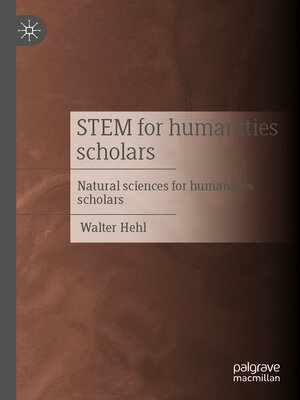STEM for humanities scholars
ebook ∣ Natural sciences for humanities scholars · Religion and Philosophy
By Walter Hehl

Sign up to save your library
With an OverDrive account, you can save your favorite libraries for at-a-glance information about availability. Find out more about OverDrive accounts.
Find this title in Libby, the library reading app by OverDrive.



Search for a digital library with this title
Title found at these libraries:
| Library Name | Distance |
|---|---|
| Loading... |
The beginnings of natural sciences and humanities in antiquity were shared, but by the end of the 19th century, the natural sciences had developed dominantly through their successes. In response to this dominance, the philosopher Wilhelm Dilthey coined the term Geisteswissenschaften (humanities) in 1883. On the other hand, it was clear in the natural sciences that entire areas of the mind were inaccessible to them, such as sensory experiences and consciousness.
This book attempts to show that this sharp divide has softened. Physics has become more intellectual, and the technology of the mind has developed: fundamentally, this is information technology. Physics for the inanimate and computer science (with a physical basis) for all living things and for the computer together explain the world. With mathematics as its foundation and tool, this results in STEM (MINT in German: Mathematik, Informatik, Naturwissenschaft, Technik).
An intellectual worldview without STEM is not possible with dignity. There are several STEM fields that are directly useful to the humanities. Examples include the principle of the laser and the concept of entropy. A third intellectual domain remains outside: art. But art and STEM are not opposites.







